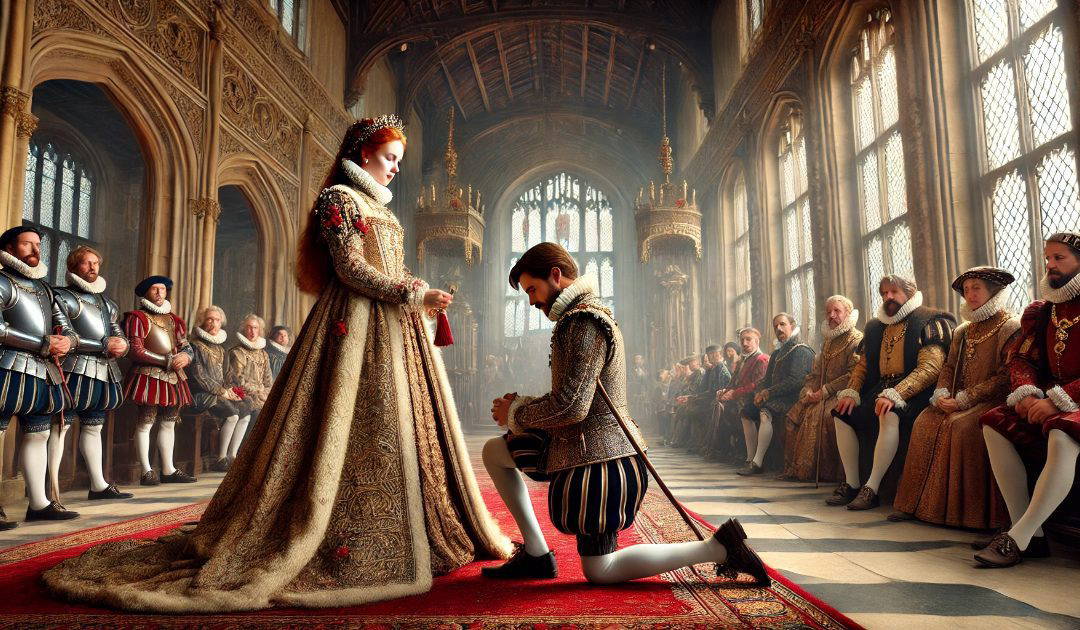On 15th January 1559 Elizabeth was crowned Queen Elizabeth I in Westminster Abbey. The long running tension between Queen Elizabeth I and Mary Queen of Scots is well known. What is less well known is that Sir Anthony Standen was knighted by both.
Standen was Master of Horse to Lord Darnley and accompanied him to Edinburgh when he journeyed there to marry Mary. The marriage was not a happy one, and when Darnley and his uncle, with a few others, murdered Mary’s secretary, David Rizzio, Standen saved Mary’s life as daggers flailed around. For that Mary knighted him. Standen had to wait twenty-nine years for his second knighthood, which came eight years after the defeat of the Spanish Armada. Standen’s intelligence of the strength and intentions of the armada was invaluable to Walsingham. Perhaps it was the clandestine nature of espionage that delayed Standen’s recognition, or perhaps it was his Catholicism that irked Queen Elizabeth. Her knighting of Standen is told in detail in Golden Lads, by Daphne Du Maurier. But I should be telling you about Elizabeth.
Queen Elizabeth I reigned from 1558 to 1603, marking one of the most significant periods in English history known as the Elizabethan Era. The daughter of Henry VIII and Anne Boleyn, she ascended to the throne after the tumultuous reigns of her half-siblings, Edward VI and Mary I. Elizabeth’s reign is characterized by the consolidation of Protestantism in England, following her sister Mary’s Catholic rule. She established the Church of England as the national church, promoting religious tolerance to some extent.
Elizabeth’s reign saw the flourishing of arts and culture, with notable figures like William Shakespeare, Christopher Marlowe, and Ben Jonson emerging during this time. The era is also known for advancements in exploration, with figures like Sir Francis Drake and Sir Walter Raleigh expanding England’s influence overseas.
Politically, Elizabeth skillfully navigated complex relationships with powerful nations, notably defeating the Spanish Armada in 1588, which solidified England’s naval supremacy. Her reign faced challenges, including internal plots and foreign threats, but she maintained stability through astute diplomacy and political maneuvering.
Elizabeth I’s legacy is one of a strong, independent monarch who fostered a sense of national identity and cultural achievement, leaving a lasting impact on England and the world. She died in 1603, ending the Tudor dynasty.

